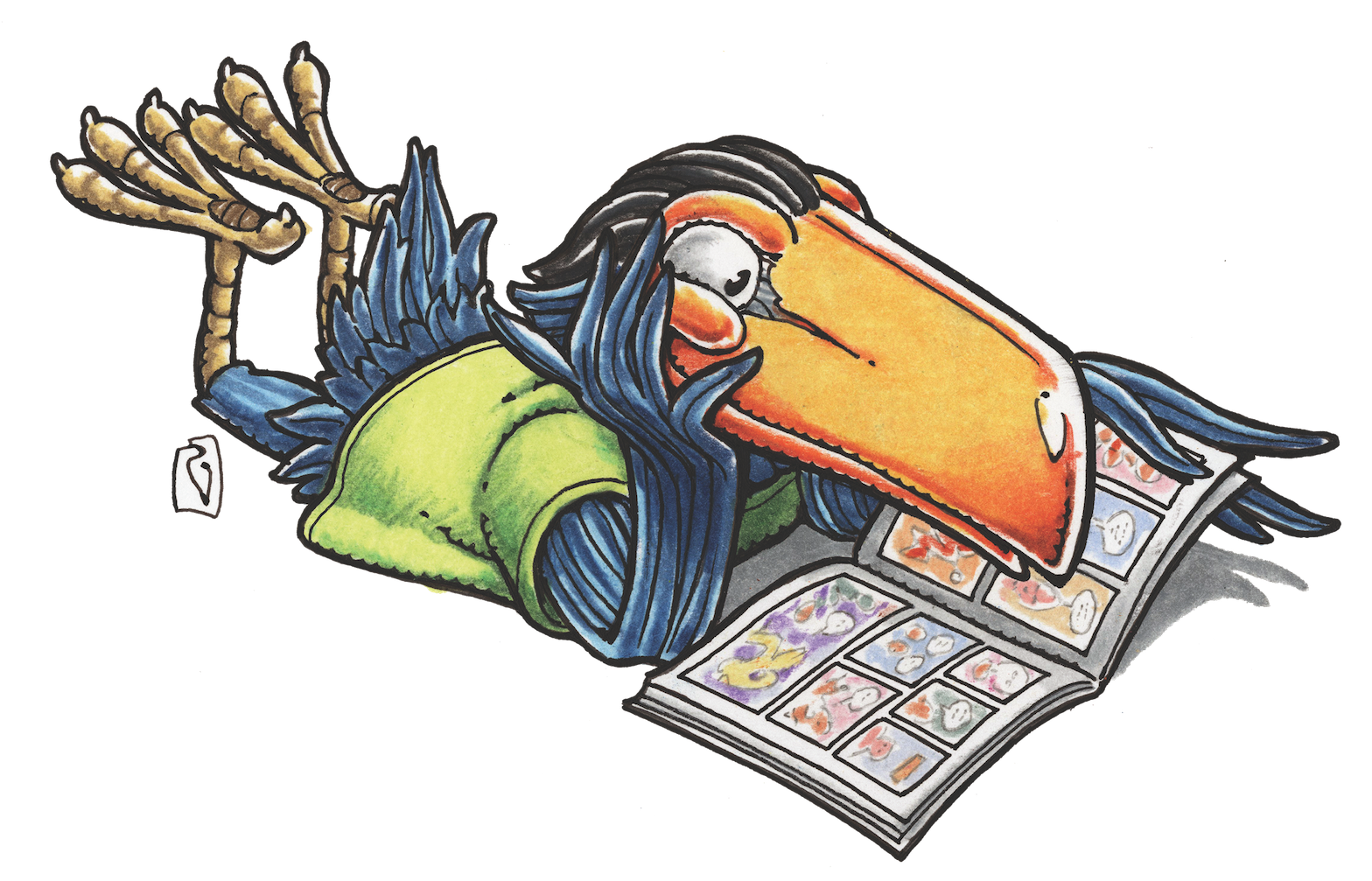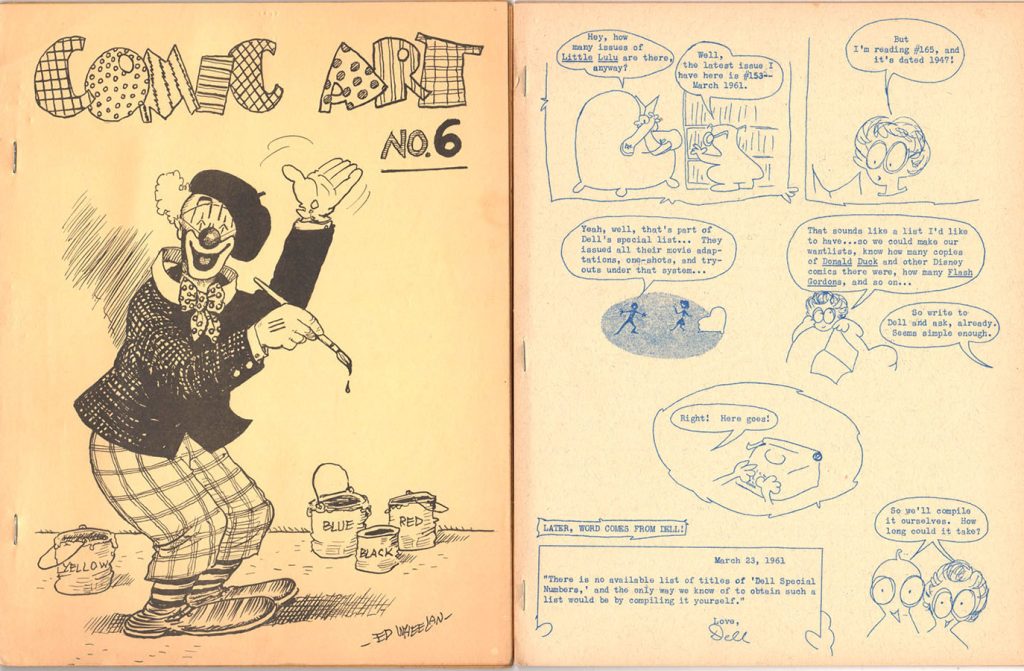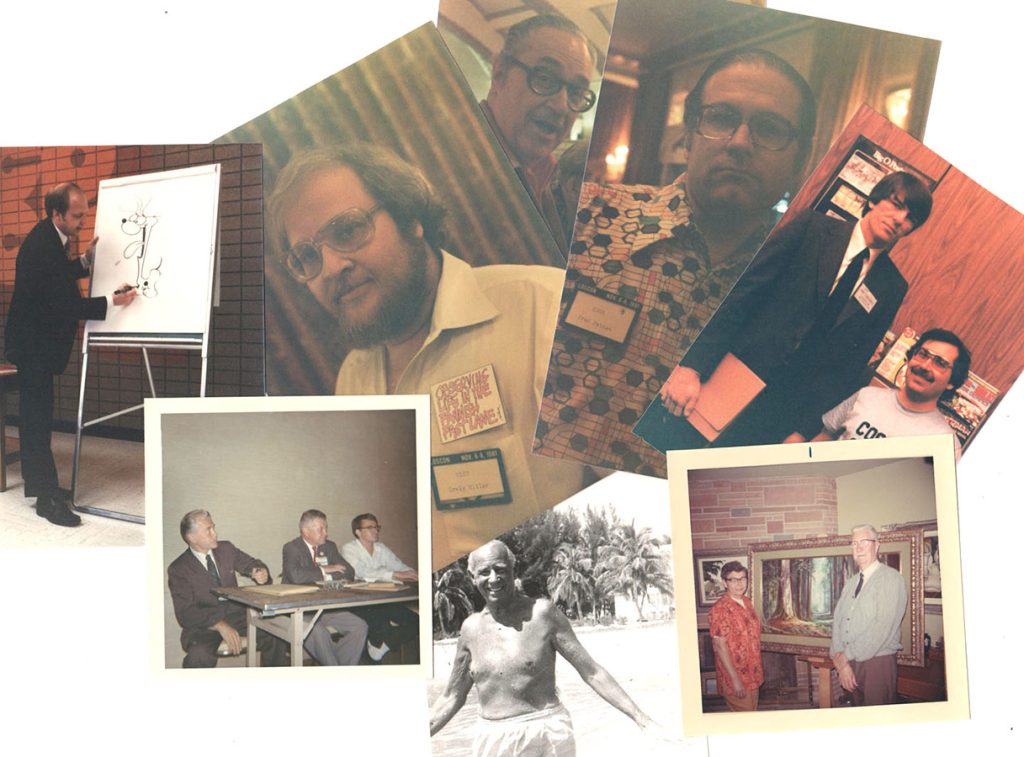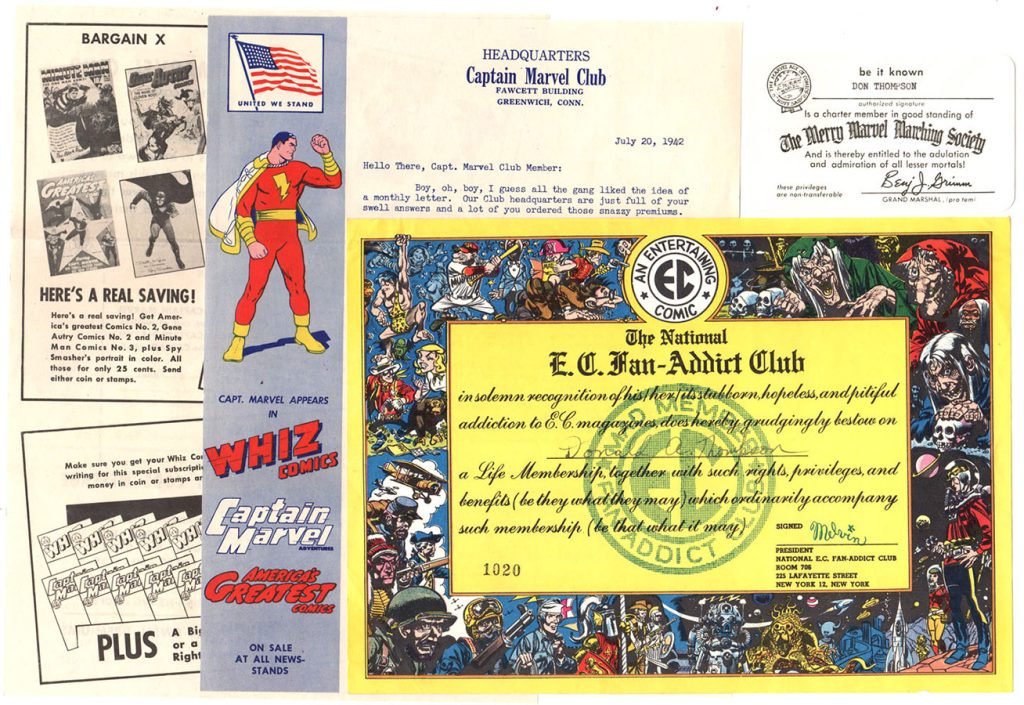MAGGIE’S WORLD BY MAGGIE THOMPSON
Maggie’s World 054: Dealing with Stuff

I Opened My 2017 Comic-Con Panel with This:
A friend recently reported on a visit from that friend’s acquaintance. The person had entered the home, looked at the rooms filled with precious collectibles, and exclaimed, “Wow! It’s a five-dumpster house!”
When people spend decades in scholarship and acquisition to build a magnificent collection, what’s the next step?
The “Dealing with Stuff” panel consisted of my asking questions of representatives of three solutions: a museum, a university, and an auction house. Understanding that there are many other similar experts today, these specific representatives were Geppi’s Entertainment Museum Collections & Operations manager Mike Solof, Columbia University Libraries Curator for Comics and Cartoons (and librarian for Ancient & Medieval History) Karen Green, and Heritage Auctions managing director, Comics & Comic Art Lon Allen.

Organizing and Identifying Stuff
“If you can’t find it, you don’t have it.”
Son Stephen made that comment to me more than a decade ago.
What, exactly, do you have? Is it accessible? Are your comics filed in order in shortboxes? (Don’t use longboxes; that way lies a hernia.)
Have you paused to analyze your Stuff recently? What are your plans for it for the next decade? After the next 20 years? Do your family members or friends know what’s precious that’s hiding in your Stuff?
- Identify and organize your treasures. I use ComicBase for my comics and Excel for some of my other Stuff. How about you?
- Is any of your Stuff of importance to researchers?
- Are you enjoying what you have?
Consider those questions, as you evaluate what you have. And keep in mind that some Stuff is, yes, junk. (I’ll pause while you come to terms with that idea—and how it would be best to deal with junk.)
The excellent folks on my panel—and the institutions they represented—are not the only ones out there. Why not start now to see who might be able to help you? There are professional and amateur appraisers, and you may already know (or be) an expert.
Oh, and before you go further: As you organize Stuff, remember to protect it. Plastic bags keep comics from damage and make it easy to label each. I like to hold onto the original packaging for statues so’s to guard each from damage in case of eventual moving. And so on.
And then …
“The Reign of the Superman” by Jerry Siegel and Joe Shuster featured a telepathic villain in 1933 in a story appearing in their fanzine Science Fiction #3. A copy of that issue exists that, as far as is known, is the only one signed by both. The copy belonged to Supergirl creator Otto Binder, who gave it to Dick and Pat Lupoff. That’s an incredible provenance, and they’d like to sell it, but I’ve been trying for a few years to get them the top price and haven’t found what I consider to be a satisfactory result. What’s to be done?
Bob Tucker was a science-fiction fan and SF and mystery writer. He was a member of the Fantasy Amateur Press Association (which had members who were SF experts and professionals), and Don and I were on the waiting list. Bob kindly sent his current FAPA mailings on to us. When I visited the Billy Ireland Cartoon Library & Museum at Ohio State University a few years ago, I spoke with the curator of another OSU collection and mentioned that I wouldn’t curl up on a wintry night to read Bob Tucker’s old FAPA mailings. He said, “Oh, I would.” The mailings are still somewhere in my house. What should I do with them?

Donating to History
Since getting home from San Diego, I find news that the University of California, Riverside Library has digitized and put online nearly 6,000 science-fiction-convention photos by Jay Kay Klein. His papers were part of the Eaton Collection, and the university librarian said, “We are actively working to make the collection available to researchers worldwide, which I know was one of the goals of the original bequest from Jay Kay Klein.”
It includes at least one photo of Don and me in which Jay Kay didn’t bother to include our faces in the (masquerade at Pittcon) photo. Tribute to Mom for making great costumes? In any case, I intend to set aside a day or two to join in the crowd-sourcing identification process.
And then begin to take a look at the hundreds (thousands?) of possibly historic photos that still sit (amid admittedly adorable photos of kids and pets) in boxes in my house.
Karen Green said that Chris Claremont recently donated his papers to Columbia University; some time ago, I donated some duplicate comics to the Billy Ireland collection. We used to send a free subscription to Comics Buyer’s Guide to the Comic Art Collection of Michigan State University Libraries.
The challenge is to identify what is needed by what school or museum and then to see how best to provide it.

But What About the Money to be Made?
Some people I know have been collecting for years and have begun to downsize. One described the process, bringing needed income in today’s world, as “living off clutter.”
In the last month, I’ve come across a few items that folks I know have been planning to liquidate. What are the options? Some start with garage sales and selling items to interested friends. If they don’t want to turn into regular sales folks themselves, they might like to check on comics shops in their area, because some stores build an inventory of back issues. Or check on mail-order dealers with whom they’ve done business. Consignment shops might be an option before going on to becoming a regular seller. Online options include eBay, Amazon, and Atomic Avenue.
And—if what you have is valuable and in demand—consider consigning to auction houses specializing in what you have. They stay in business by getting the best prices for cool Stuff.
Oh, and then, of course, there’s the option of trading your Stuff for other Stuff.
So …
After you organize your Stuff (or even while you’re organizing it):
- Throw some Stuff out.
- Sell some Stuff.
- Donate some Stuff.
- Save some Stuff.
And remember, when you’re saving Stuff, well … You’re still dealing with it, aren’t you? Have you planned for what’s next?
Maggie’s World by Maggie Thompson appears the first Tuesday of every month here on Toucan!